Getting ready for a baby can be a daunting task. You have to figure what products to buy and how many of them your baby will need. You will also want to find products that offer the best value – a great price for great quality. Most likely, you will find yourself picking everybody’s brain who has babies, reading numerous product reviews, and signing up for Consumer Reports.
As overwhelming as it is, this is not all you have to do. Sadly, in the US, there are insufficient regulations to make sure that products we buy do not have toxic chemicals that may have adverse short-term or long-term health effects. Avoiding toxic chemicals in consumer products becomes extremely important when it comes to babies, because babies are very different from adults, both physiologically and behaviorally. For example, they breathe more rapidly so they are proportionally exposed to more air pollutants. Infants generally absorb chemicals more easily, process them more slowly, and eliminate them less efficiently.
It is up to us as parents to protect our babies from toxic chemicals and make sure that products we buy for them do not contain them. In this article, I will tell you about five of the most critical groups of chemicals I recommend avoiding when buying products for your baby.
VOCs
VOCs are short for volatile organic compounds. In this case, “organic” does not mean that they are good for you. It means that they are associated with organic chemistry. VOCs are emitted as gases from certain solids or liquids, and include a variety of chemicals. Some of these chemicals may have short- and long-term adverse health effects, ranging from eye irritation and allergies to cancer. According to the Environmental Protection Agency, even in the very polluted urban areas, the concentrations of VOCs are higher indoors (up to ten times higher) than outdoors.
Practical tips — VOCs
- When doing nursery remodeling, choose zero-VOCs paint.
- When buying a crib and other nursery furniture, choose solid wood and zero-VOC wood finish, or buy it unfinished. You can stain it yourself with linseed oil or leave it unfinished.
- As polyurethane foam may emit VOCs, avoid it in crib mattresses and gliders.
- Consider buying a changing table second-hand because it has already off-gassed.
- Avoid wrinkle-free bedding because it may contain formaldehyde, one of the VOCs.
Flame retardant chemicals
When flame retardant chemicals were first introduced in the 1970s, very little was known about them. They were first used in children’s pajamas and soon after, in upholstered furniture, as a result of the adoption of a California law designed to prevent fires from cigarettes. Since California is the eighth largest economy in the world, furniture manufacturers have found it more efficient to simply manufacture all furniture for sale anywhere in the U.S. to California’s strict standard, meaning that all of our upholstered furniture sold in the U.S. in the last forty years is full of toxic chemicals – up to two pounds in a sofa, for example.
Since the California regulation was adopted, over 4,000 studies have been published indicating their harmful impact on the environment, and on animal and human health. Brominated and chlorinated flame retardants are associated with endocrine and thyroid disruption and cancer; with disrupting the immune and reproductive systems; and with adverse effects on fetal and child development, to name a few problems.
Effective January 1, 2014 with compliance by January 1, 2015, there is a new California regulation that may ease the problems somewhat. Upholstered furniture sold after that date won’t be required to withstand a 12-second open fire test, which will eliminate the need for flame retardant chemicals. However, manufacturers may still use them at their discretion.
Practical tips — flame retardant chemicals
- Look for the new TB117-2013 tag; however, verify with producers and retailers that the furniture is flame retardant-free. Ask retailers questions about flame retardants. If you are unsatisfied with answers, ask the manufacturers.
- Avoid crib mattresses made of polyurethane foam.
- Make sure your nursing pillow does not contain flame retardant chemicals.
- Ask for a flame retardant-free pack-n-play mattress.
- When you buy children’s pajamas, avoid polyester. Polyester can contain, or be made along with, flame retardants.
- Don’t smoke!
Plastics
By now we all have heard of the dangers of Bisphenol A (BPA) in plastic. BPA is a plasticizer used in some plastic products, and mimics the female hormone estrogen. The good news is that a lot of products are now marketed as being BPA-free. The bad news is that emerging evidence suggests BPA-free plastic is no better than its BPA-containing counterparts. All plastic needs plasticizers. While BPA has been widely tested, this is not the case for many other plasticizers, so not as much is known about them.
I became very skeptical about all types of plastic after reading the result of tests done by CertiChem, founded by George Bittner, PhD, a Stanford-educated professor of neurobiology at the University of Texas-Austin. CertiChem reported that “almost all” commercially available plastics that were tested leached synthetic estrogens—even when they were not exposed to conditions known to unlock potentially harmful chemicals, such as the heat of a microwave, the steam of a dishwasher, or the sun’s ultraviolet rays. According to Dr. Bittner’s research, some BPA-free products actually released synthetic estrogens that were more potent than BPA.
Estrogen-mimicking chemicals disrupt the function of the body’s endocrine (hormone) systems, which may lead to a number of developmental problems in children, such as early reproductive tract development, pubertal development, neurodevelopment, and obesity.
There are 7 types of plastics. In addition to BPA and other plasticizers, plastic may include a variety of toxic additives such as Bisphenol S (BPS), lead, phthalates, and dioxins. Ultimately, as consumers, we do not know what plastics are made of, because manufacturers do not list their ingredients. My recommendation is to avoid plastic whenever possible.
Practical tips — plastics
- Choose non-waterproof crib mattress.
- Avoid recycle code #3 and #7, which are the most toxic plastics.
- Choose glass, silicone, and stainless steel materials for baby bottles, cups, bowls, plates, and utensils.
- Use cloth diapers instead of disposable.
- Choose teething toys made of natural rubber, organic wood, or organic cotton.
Synthetic musks
Synthetic musks are man-made chemicals created to replace the rare and more expensive natural musks obtained from musk deer and musk ox. Synthetic musks are used as fixatives. A fixative is a stabilizing or preservative agent–a substance used to reduce the evaporation rate and improve stability when added to more volatile components. As a fixative, a synthetic musk enhances and prolongs the smell of whatever substance to which it is added. In other words, it is one of the undisclosed ingredients of fragrances or perfumes. It is quite common for synthetically scented products to have acute adverse effects, triggering headaches, migraines, asthma, and allergies, and causing irritation to the eyes, nose, and throat. There is a possibility that polycyclic musks, by far the most common, may debilitate the cell’s natural ability to defend itself against other toxic substances in the product. Synthetic musks may also alter hormone systems, which may lead to a number of developmental problems in babies.
Practical tips — synthetic musks
- Do not use synthetic air fresheners.
- Avoid the words perfume, parfum, and fragrance on the labels of personal care/skin care baby products.
- Avoid perfumed toys.
- Use small quantities of essential oils if fragrance is needed.
- Sprinkle baking soda on carpet if odor elimination is needed.
On-body pollutants
Most baby skin care and personal care products are made from petroleum-derived ingredients. Petroleum-derived ingredients may contain contaminants that are not listed on the label, such carcinogenic 1,4-dioxane. Also, while some products are advertised as natural because they are derived from coconut oil, the process of derivation includes the addition of toxic chemicals, of which traces may remain in the final product.
There are two major problems with most synthetic ingredients. Baby skin is thinner than adults, which leads to higher dermal absorption. Thus, any harmful ingredients end up in the baby’s bloodstream. Second, a lot of synthetic ingredients may irritate the baby’s skin. Some of them are called sensitizers, meaning that after repeated use, a baby may develop eczema.
Practical tips — on-body pollutants
- Buy diaper creams made with edible vegetable oils (certified organic diaper creams are the best).
- Use a certified blend of organic edible vegetable oils such as olive oil, coconut oil, and sunflower oils as a moisturizer.
- Choose saponified soap over synthetic detergents.
- Choose petroleum-free biodegradable baby wipes, or better yet, use cloth wipes.
- Skip bubble bath and mineral oil.
While there are a lot of potentially harmful chemicals in baby products, we as parents can take steps to significantly reduce our babies exposure to them. Read labels, ask manufacturers questions, and for more information and help, visit my blog at http://ireadlabelsforyou.com.
 Irina Webb is a researcher, writer, and consultant who believes that every baby deserves a healthy start in life. She works with expectant mothers and new parents to make sure the baby products they buy do not contain dangerous chemicals. Irina runs a blog called I Read Labels For You, which contains a wealth of information for anybody who wants to reduce exposure to toxic chemicals. She tells her blog readers, “If you see someone standing in line (could be anywhere) compulsively reading the ingredients on any bottles in her reach, come say hello. It’s probably me.”
Irina Webb is a researcher, writer, and consultant who believes that every baby deserves a healthy start in life. She works with expectant mothers and new parents to make sure the baby products they buy do not contain dangerous chemicals. Irina runs a blog called I Read Labels For You, which contains a wealth of information for anybody who wants to reduce exposure to toxic chemicals. She tells her blog readers, “If you see someone standing in line (could be anywhere) compulsively reading the ingredients on any bottles in her reach, come say hello. It’s probably me.”
Photo Credit: Baby under blanket – 123RF / natulrich

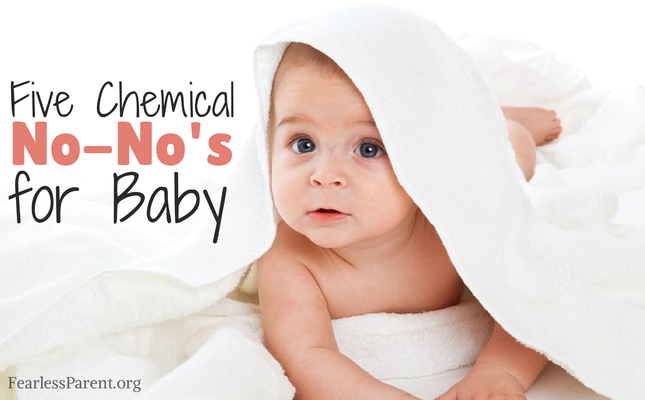
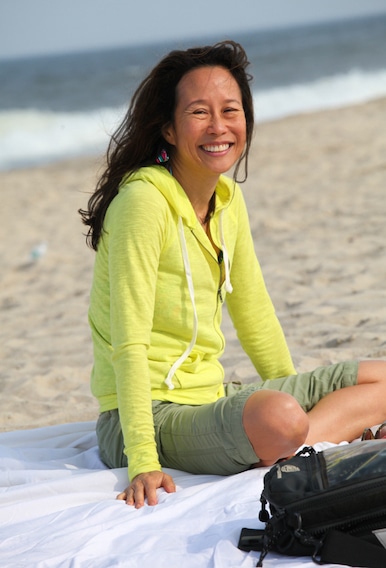

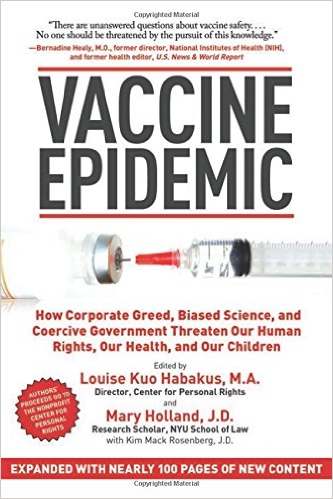






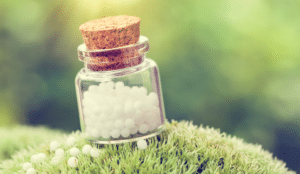
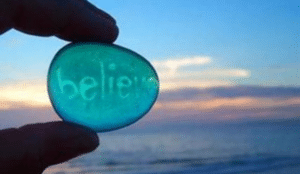
August 4, 2014 8:14 am
Comments 0